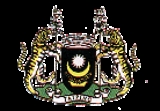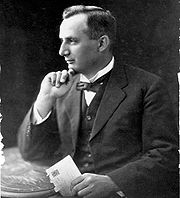
Taiping Lake Gardens
Encyclopedia
Taiping Lake Gardens is the first public garden established during British rule in Malaysia. The garden is located near Bukit Larut
, within the town center and the Taiping Zoo.
 The Taiping Lake Gardens was originally a mining site before it was established as a public garden in 1880. The idea of a public garden was dear to the heart of Colonel Robert Sandilands Frowd Walker
The Taiping Lake Gardens was originally a mining site before it was established as a public garden in 1880. The idea of a public garden was dear to the heart of Colonel Robert Sandilands Frowd Walker
. It was developed by Charles Compton Reade
(1880–1933), who was also responsible for planning the Kuala Lumpur
garden town. The abandoned tin mine was donated by Chinese capitalist and former Perak State Council member Chung Thye Phin
(son of Chung Keng Quee
) as a recreation park for public use. In 1884 the gardens were planted with grasses, flowers and trees; a part of the gardens was fenced, to keep bulls out.
The 64 hectares (158.1 acre) site was the first public garden in Malaya
, and was cherished for its beauty; it has been well-maintained since its opening. There are ten scenic lakes and ponds, which highlight the gardens. Along Residency Road, near the gardens, were golden rain trees (pterocarpus indicus) planted along the pathway. In George L. Peet’s A Journal in the Federal Capital, when he visited Taiping in 1933 he said “I know of no more lovely sight in this country than the Taiping gardens when the rays of the early morning sun are shining obliquely through their clumps of bamboo, palms and isolated trees scattered on islands among the expanse of water. One receives in that glorious half hour an experience of light in foliage that is quite unobtainable in England”.
There are few private and government houses located near the gardens; among them are the Old Residency (home of the Secretary to the Resident
), the Raja’s House at the junction of Birch Road and Residency Road and the army officers' residences on Batu Tugoh Road. The gardens were so striking that they attracted many travelers to write of their beauty:
Bukit Larut
Bukit Larut, formerly known as Maxwell Hill , is a hill resort located 10 km from Taiping, Perak, Malaysia. Founded in 1884, it is the oldest hill resort in Malaysia. It is approximately 1250 m above sea level...
, within the town center and the Taiping Zoo.
History

Robert Sandilands Frowd Walker
Lt. Colonel Robert Sandilands Frowd Walker C.M.G. was a prominent figure in Malaya during the British colonial era in the late nineteenth-century...
. It was developed by Charles Compton Reade
Charles Reade (town planner)
Charles Compton Reade was a town planner who supported the garden city movement of the early twentieth century.Born in Invercargill, New Zealand in 1880, Reade became the major figure in disseminating Garden City ideas in Australia...
(1880–1933), who was also responsible for planning the Kuala Lumpur
Kuala Lumpur
Kuala Lumpur is the capital and the second largest city in Malaysia by population. The city proper, making up an area of , has a population of 1.4 million as of 2010. Greater Kuala Lumpur, also known as the Klang Valley, is an urban agglomeration of 7.2 million...
garden town. The abandoned tin mine was donated by Chinese capitalist and former Perak State Council member Chung Thye Phin
Chung Thye Phin
Kapitan Chung, Thye Phin , MSC, JP was a wealthy Malayan tin miner and rubber planter of Hakka ancestry who was raised on the island of Penang in the state of the same name in Malaysia, known at that time as British Malaya. He was a member of the Perak Advisory Board and the last Kapitan China of...
(son of Chung Keng Quee
Chung Keng Quee
Kapitan China Chung Keng Quee was the founder and administrator of modern Taiping. He was a millionaire philanthropist and known as an innovator in the mining of tin. He was involved in many other industries including farming, pawnbroking and logging. He was respected by both Chinese and European...
) as a recreation park for public use. In 1884 the gardens were planted with grasses, flowers and trees; a part of the gardens was fenced, to keep bulls out.
The 64 hectares (158.1 acre) site was the first public garden in Malaya
British Malaya
British Malaya loosely described a set of states on the Malay Peninsula and the Island of Singapore that were brought under British control between the 18th and the 20th centuries...
, and was cherished for its beauty; it has been well-maintained since its opening. There are ten scenic lakes and ponds, which highlight the gardens. Along Residency Road, near the gardens, were golden rain trees (pterocarpus indicus) planted along the pathway. In George L. Peet’s A Journal in the Federal Capital, when he visited Taiping in 1933 he said “I know of no more lovely sight in this country than the Taiping gardens when the rays of the early morning sun are shining obliquely through their clumps of bamboo, palms and isolated trees scattered on islands among the expanse of water. One receives in that glorious half hour an experience of light in foliage that is quite unobtainable in England”.
There are few private and government houses located near the gardens; among them are the Old Residency (home of the Secretary to the Resident
Resident (title)
A Resident, or in full Resident Minister, is a government official required to take up permanent residence in another country. A representative of his government, he officially has diplomatic functions which are often seen as a form of indirect rule....
), the Raja’s House at the junction of Birch Road and Residency Road and the army officers' residences on Batu Tugoh Road. The gardens were so striking that they attracted many travelers to write of their beauty:
Lakes and ponds
- Alamanda Pond
- Island Pond
- Jungle Lake
- Oblong Pond
- Pavilion Pond
- South Lake
- Swan Lake
- West Lake
Air
Penang International Airport is about a 90-minute drive from Taiping. Kuala Lumpur International Airport is about a four-hour drive south via the North-South Expressway.Road
Taiping is easily accessible from the PLUS North-South Expressway. From Penang (90 km away) Kamunting is the nearest exit, whilst Changkat Jering is the most convenient exit from the motorway if you are traveling north from Ipoh (70 km). Taiping is well-connected to the rest of Peninsular Malaysia by express buses, which arrive at and depart from the long-distance bus station at Kamunting (6 km from the town centre) and Simpang (7 km from the town centre). Buses also travel direct from Taiping to Singapore and Hat Yai. Southbound buses depart from Kamunting and call along Simpang (Medan Simpang) to pick up passengers from Simpang before heading to the highway via the Changkat Jering interchange. Bus tickets are available from counters located at Medan Kamunting and Medan Simpang.Rail
Keretapi Tanah Melayu (formerly known as the Malayan Railway) operates a number of daily services along the main north-south line which stops at Taiping station. One service, the Ekspres Langkawi, connects Taiping with Hat Yai.Attractions
- Lakes and ponds - There are about 10 man-made lakes and ponds distributed throughout the gardens.
- Maxwell Hill (Bukit Larut) - A hill station with an altitude of about 1000m; ideal for jungle-trekking and camping. Accessible by four-wheel drive; accommodation available on the hilltop. No reservations; visitors must go early (at 8 am) to buy tickets for the day. Visitors must specify what time they want to go up and what time to come down. Cost is RM4.00 (US$1.40) per person, round trip. One option is to hike up, which takes an average of 2-3/4 hours (one way); the jeep journey takes 25 minutes.
- Tulip garden - Located at Bukit Larut, it is the first tulip farm established in Malaysia. Admission to the tulip farm is RM1 (US$0.35) outside tulip season and RM2 (US$0.70) during the season.
- Taiping Zoo and Night Safari Taiping - First zoo to be established in Malaysia; popular on weekends with day-trippers from out of town
- Day zoo: adults RM12, child (3–12 years) RM8 (US$2.80); discounts available for school groups, senior citizens (age 55+) and tourist groups (20 or more); open 08:30-18:00, feeding times 10 am and noon
- Night safari: adults RM16, child (3–12 years) RM10 (US$3.50); discounts available for senior citizens (55+) and tourist groups (20+); open 20:00-23:00 (closes at midnight on Saturdays and the eve of public holidays)

